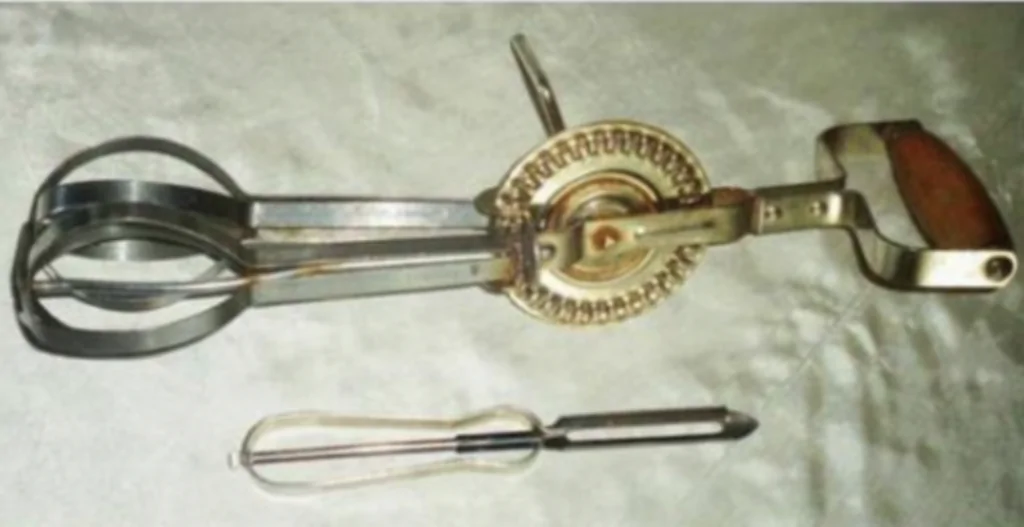Have you ever paused to wonder how the kitchen tools we use daily came into existence? Today, let’s travel back in time and explore the fascinating history of one essential appliance: the mixer.
The Early Days of Mixing
Our story begins in the mid-19th century when inventors worldwide were striving to make mixing ingredients easier and more efficient. In 1856, Ralph Collier, a tinner from Baltimore, patented the first mixer with rotating parts. Just a year later, E.P. Griffith brought the whisk into our kitchens, a revolutionary tool for blending ingredients. By 1859, the Monroe brothers, J.F. and E.P., had their hand-turned rotary egg beater patented in the United States, marking another milestone in kitchen innovation.

These early designs piqued the interest of the Dover Stamping Company, which acquired the Monroe Brothers’ patent, branding their product the iconic “Dover beater.” So cherished were these egg beaters that a 1929 recipe from the Gazette newspaper of Cedar Rapids, IA, featured the Dover beater in a delightful dessert recipe called “Hur-Mon Bavarian Cream.”
Enter the Electric Era
It was only in 1885 that the first electric mixer saw the light of day, all thanks to American inventor Rufus Eastman. However, the revolution truly kicked off when the Hobart Manufacturing Company introduced their large commercial mixers. By 1914, Hobart had unveiled a groundbreaking new model that transformed the mixer landscape entirely.
In the early 20th century, two American brands made their names: the Hobart KitchenAid and the Sunbeam Mixmaster. These mixers grew in popularity, but it wasn’t until the 1920s that electric mixers became commonplace in most households.
The Stand Mixer: A Game Changer
In 1908, Herbert Johnston, an engineer at the Hobart Manufacturing Company, had an epiphany while watching a baker mix bread dough with a metal spoon. Resolving to create a mechanical counterpart, he embarked on a mission to simplify the mixing process.
By 1915, Johnston’s 20-gallon mixer had become standard equipment in large bakeries. Just four years later, in 1919, the Hobart Manufacturing Company introduced the Kitchen Aid Food Preparer, which would later be known simply as the stand mixer. This revolutionary invention quickly became a beloved staple in kitchens across the nation.
From hand-turned rotary beaters in the 19th century to the electric motors powering today’s stand mixers, this essential kitchen tool has evolved remarkably, making our culinary lives easier and more enjoyable.
Next time you whip up a batch of cookies or blend some cake batter, take a moment to appreciate the rich history behind your trusted mixer. It’s a testament to human ingenuity and the drive to simplify daily tasks.

Another versatile kitchen tool with a captivating history is the meat grinder. Known as a “meat mincer” in the UK, this appliance has been used for mincing and mixing raw or cooked meat, fish, vegetables, and more.
The journey of the meat grinder dates back to the 19th century when Karl Drais invented its first version. Initially, meat grinders were hand-cranked, pushing the meat through a metal plate with small holes, producing long, thin strands of flesh.
Technological advancements and the advent of electricity gave birth to powered meat grinders. Nowadays, electric grinders make processing several pounds of meat a breeze. Some models even come with attachments for sausage making, kibbe, and juicing, broadening the range of uses for these versatile tools.
So, when you’re mincing meat for a savory dish or trying your hand at homemade sausages, remember the ingenuity behind your meat grinder. It’s a testament to how kitchen tools have evolved, making our culinary adventures easier and more delightful.




